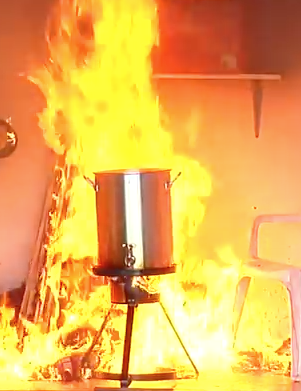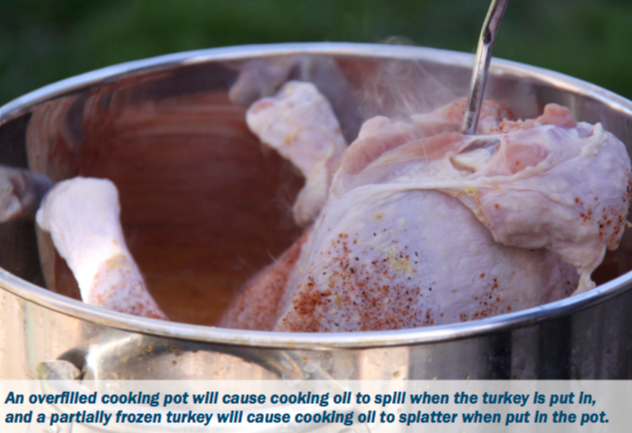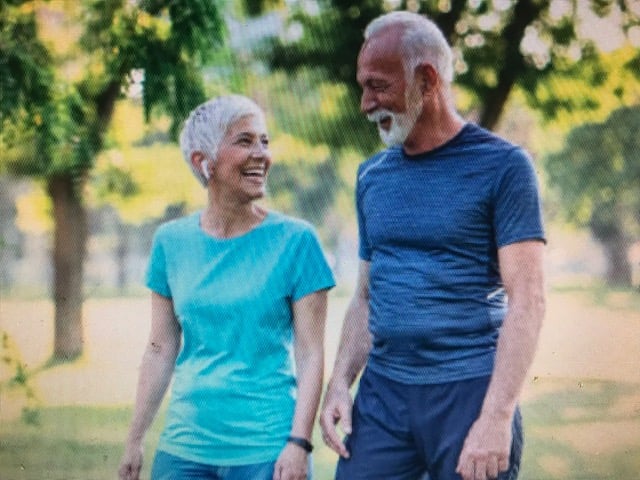It’s that time of year when we pause to give thanks and enjoy visiting and feasting with our family, friends and loved ones. Such traditions are treasured by us all, as we all have our own traditions.
For the Moore family it’s a morning full of cooking and preparation, all timed to perfection to be ready to eat to our hearts content just after lunch time, so that we can — scratch that — so that I can be done in time to watch the annual Dallas Cowboy Turkey Bowl. After a well timed nap, it’s off to the Movie Theatre to catch a new release with the kids and relatives, where pumpkin pie is always waiting for us upon our return.
Thanksgiving is a holiday of feasting, but it’s also a day of intense cooking, when stovetops and ovens are working overtime. These culinary activities bring an increased risk of fire particularly when these cooks are trying to prepare several dishes all while entertaining friends and family.
Thanksgiving remains the leading day for cooking fires, with three times as many cooking fires as any other average day, according to the National Fire Association (NFPA). Cooking equipment fires are still the leading cause of U.S. home fires and injuries, and the third leading cause of fire deaths. According to the U.S. Fire Administration (USFA), on average there are an estimated 2,000 fires occurring on Thanksgiving Day, causing 5 deaths on average and almost $21 million in property damage.

It’s also that time of year where men pull out that once a year cooking appliance called the Turkey Fryer — or what some fire departments call the Turkey Torch. Its origins began in the South, as inevitably it had to be invented by some cut-off flannel shirt-wearing redneck, where you just know it was discovered after he said. . . “wait, here hold my beer.”
The truth is food historians generally agree that fried turkeys trace their roots to Bayou (Louisiana/Texas) creole cuisine. No exact year, restaurant, or person is connected to this particular style of cooking. But there is evidence that fried turkeys were cooked outdoors for large popular events (family reunions, charity dinners, church suppers, etc.) in the early years of the twentieth century.
Just before the turn of the century I first noticed these turkey fryers being sold in our local department stores. They eventually worked their way up the east coast and across this land, offering a tasty alternative to baked holiday turkeys.
With an estimated 45 million turkeys being cooked every year on Thanksgiving, turkey fryers have become popular because of the reduced time needed to cook a turkey versus other conventional methods. Tender, succulent, and – surprisingly – not at all greasy, this deep-fried twist on the traditional bird takes only 3-4 minutes per pound to cook. What makes it even that more appealing to many wives is that their husbands are all too willing leave the kitchen to cook these tasty birds on their own or with the other men in the family.
Like fireflies being drawn to electric bug zappers, many men are drawn to this risky cooking appliance, and many proceed without ever reading the directions and end up cooking their deck, porch and house, while even some find ways to deep fry their own legs or arms.
Unfortunately this isn’t a laughing matter as the internet is covered with videos and stories of devastating fires and even severe burns or deaths.
Manufacturers have made strides toward enhancing several product safety features in an attempt to make turkey fryers safer for consumers. These new features include designing non-heat conducting handles and sturdier stands; but, based on the evidence, turkey fryers still pose a significant risk if not used correctly.

Even the Underwriters Laboratories (UL) a global independent safety science company with more than a century of expertise innovating safety solutions remains firm in its decision not to certify any turkey fryers with its trusted UL Mark. Based on their test findings, they claim that these fryers are not worth the risks and will not bless them for use.
Even the National Fire Prevention Association (NFPA) discourages the use of outdoor gas-fueled turkey fryers and urges those who prefer fried turkey to seek out professional establishments, such as grocery stores, specialty food retailers, and restaurants for the preparation of the dish, or consider a new type of “oil-less” turkey fryer.”
NFPA does not believe that consumer education alone can make the risks of either type of turkey fryer acceptably low because of the large quantities of hot oil involved and the speed and severity of burn likely to occur with contact.
But for those of you who still insist on deep frying your very own turkey, for your safety remember to follow these helpful safety tips:
Before you begin
• Read and carefully follow the manufacturer’s instructions and be conscious of all warnings.
• To avoid overheating of the liquid propane cylinder, ensure it is situated up wind as far away as practical (depending on the length of hose provided) from the fryer burner.
• Turkey fryers should only be used outdoors in the open at least 10 feet from structures – including garages, carports, breezeway, porch, fences, walls, overhangs, vehicles, and combustible materials.
• Always use a turkey fryer on a flat, stable, non-combustible surface, and never on a wooden deck or any structure that can catch fire.
• Remember never ever leave a fryer unattended, and maintain a constant fire watch.
Cooking Time
• Never ever cook a partially or fully frozen turkey! A frozen turkey can cause the oil to splatter and boil over, posing a potential risk of fire and burn injuries.
• After thawing dry the turkey before putting it in the oil including the cavity of the bird.
• Stay away from marinades that may react with the hot fryer oil.
• When filling the pot with oil, be sure to follow the manufacturer’s instructions and never over-fill the turkey fryer. This can cause the oil to overflow posing a potential risk of ignition from the burner flame.
• Center the pot over the burner on the cooker.

• Never warm the oil above 400°F and always use the thermometer attached with the turkey fryer to measure the oil temperature. Check oil temperature frequently.
• If the oil begins to smoke, turn gas to ‘off’. As cooking oil is combustible, and if it is heated beyond its cooking temperature, its vapors can ignite.
• Use oven mitts when touching a pot lid, handles or when adding or removing food to prevent the risk of burn injuries.
Cover bare skin when adding or removing food.
• Slowly lower the turkey into hot oil with caution, being careful to avoid any overflow.
• If rain or snow strikes exposed hot cooking oil, the result can be a splattering of the hot oil or a conversion of the rain or snow to steam, either of which can lead to burns.
• Young children and pets should be kept away from the area where turkey fryers are being used, even after use.
• Never move the pot or drain the oil from the pot until the oil has cooled to a temperature of 45°C (115°F) or less.
• If any portion of the turkey fryer catches fire, immediately remove all people from the vicinity of the turkey fryer, and contact the fire department or 9-1-1.
• Remember – Do not attempt to extinguish fire with water!
• Avoid alcohol consumption before and while cooking .
• To make sure your home is properly protected from flaming birds this Thanksgiving, be sure check your homeowner’s insurance policy is paid up to date and try avoiding any new family traditions that require a visit from your local fire department.
Be Safe My Friends.
Keven Moore works in risk management services. He has a bachelor’s degree from University of Kentucky, a master’s from Eastern Kentucky University and 25-plus years of experience in the safety and insurance profession. He lives in Lexington with his family and works out of both Lexington and Northern Kentucky. Keven can be reached at kmoore@roeding.com.





















